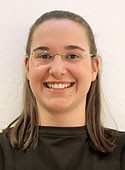It’s like the more money the student unions come across, the more problems they see.
As financial losses mount, the unions have reached an impasse: It seems they soon will have to tap their $1.5 million reserves, not for an emergency but simply to cover costs.
Normally when faced with a deficit, plans for sweeping cost reduction are the obvious solution. But instead of taking the budget to the chopping block, the unions are looking to a new source of revenue: students. The unions are pushing for the implementation of a $40 yearly union fee for UA students.
Dan Adams, Arizona Student Unions director, blames a hike in employee costs for doing a number on the current budget. Following a state-mandated increase in health benefits and retirement funds, the unions will need to come up with an additional $850,000.
It is understandable that the unions will need help so that they may attend to this unforeseen cost, but the fee money is currently budgeted for far more than covering existent costs.
As reported last week in the Arizona Daily Wildcat, the current proposal breakdown states that 50 percent of the fee would go toward the quality and number of union programs and services, like increasing club funding and offering free movie showings, and 25 percent would be used for enhancements like buying new plasma screens and adding more money for eateries.
This money transfer from students to student clubs is ludicrous. It is the burden of every club on campus to fundraise and maintain a budget that actually meets its needs, and each year many clubs are very successful in doing so. Student clubs are capable of holding percentage nights, having bake sales or finding other means of raising money. They should not be given more money needlessly collected from students. The students that are not part of clubs do not benefit from more club funding, but will still be expected to pay for it.
While the plasma screens included in the budget are intended for use as advertising space for student organizations, rather than just as TVs in lounges, their purchase just seems frivolous if the unions are as bad off as they claim.
Adams says student organizations have requested the TVs to help them recruit members and promote events, but it would be far more reasonable for clubs to continue to make posters and print flyers – and save the unions the $75,000 allotted for the plasmas.
The remaining 25 percent of the budget would be set aside to fund building expenses, such as carpets and paint and a new roof for the Park Student Union.
This is the most reasonable portion of the budget, as the upkeep costs of large buildings such as the unions can be very high. But why do necessary expenditures make up only 25 percent of the proposed student fee budget?
As university administrators push Focused Excellence in an attempt to cut under-performing programs in academics, it is silly to expect students to support funding for such a financially bloated, inefficient institution. As prices keep rising to meet costs, the unions need to re-evaluate the actual demand for some of the services they are attempting to add to the union.
The unions claim that they are simply trying to respond to requests from students, but in light of pressing repairs and high operation costs, students will probably survive if the “”Up Late”” program doesn’t receive funding from a student fee.
If the unions stand by their budget and deem these things absolutely necessary, the burden of proof will be on them to prove it to the students who will be footing part of the bill. At this point in time, the information and explanations from the unions to support these expenditures are not getting out to the student population.
Vanessa Valenzuela is a sophomore majoring in economics and international studies. She can be reached at letters@wildcat.arizona.edu.









